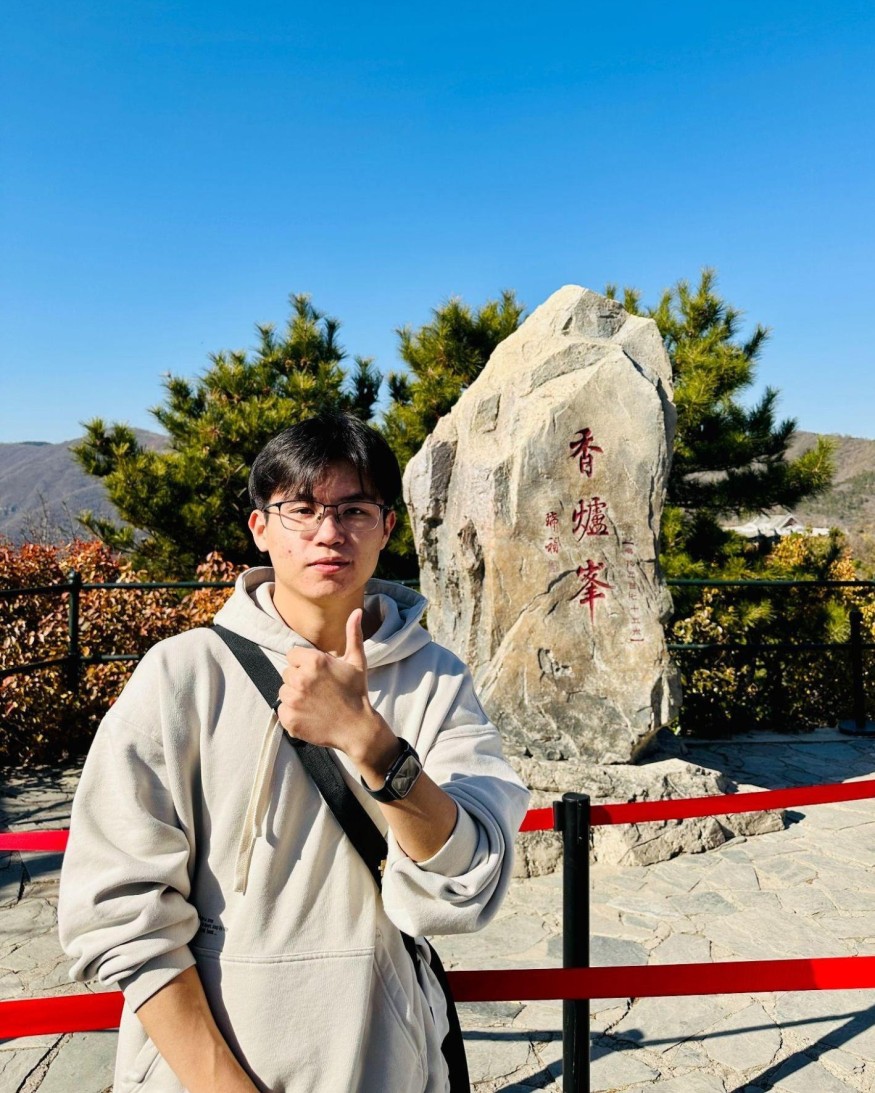
For people suffering from spinal cord injuries, regaining mobility has long been a monumental challenge, but groundbreaking technologies like brain-computer interfaces (BCIs), which create a direct link between the brain and external devices, have opened up new possibilities for helping these patients walk again.
At the heart of this innovation is Kaibo He, a robotics prodigy whose research is not only unlocking new technical frontiers but also providing a hopeful glimpse into the transformative potential of robotics in medicine.
In today's article, we'll take a closer look at his life, career, and pioneering work in rehabilitation technology.
Brain-Computer Interfaces Unlock New Frontiers in Rehabilitation Science

BCIs work by capturing electrical signals in the brain and redirecting them to external devices. For example, if a person thinks about moving their hand, a BCI can direct that signal to a robotic prosthetic. After some training, people using BCIs can learn to control the devices connected to them in much the same way we control our own muscles.
While this opens up many possibilities, early BCIs came with limitations. The human body is an intricate network of more than 650 muscles and tendons, not easily mimicked by traditional robotic solutions. Until recently, BCIs and the devices connected to them struggled to replicate natural human movements, limiting their ability to restore lost mobility fully.
Accomplishing this requires complex robotics and equally complex BCIs working in perfect harmony. When engineers make the necessary compromises to simplify the process, the resulting movements become increasingly mechanical.
However, that's all changing thanks to the work of innovators like Kaibo He.
Kaibo began his journey into this complex field while he was an undergraduate at Northwestern Polytechnical University, where he developed a passion for robotics after entering a competition that involved building a robot: "I discovered the joy of using algorithms and techniques to enable my robot to perform exciting and complex tasks I had envisioned. This moment sparked a deep fascination for robotics and became a pivotal turning point in my career path."
That path led him to Tsinghua University, where his master's research focused on controlling the human body's musculoskeletal system through BCIs. Specifically, he wanted to explore the gap between what's theoretically possible from BCIs and what can be practically achieved.
What he discovered has laid the foundation for more effective treatment options for spinal cord injuries—and potentially revolutionary changes in the field of humanoid robots and intelligent, adaptable robotic assistants in fields like healthcare and science.
Breaking Through the Complexity Barrier
At Tsinghua University, Kaibo's research group found that they couldn't effectively control patients' muscles to assist them with walking because of the complexity of human movement. Unlike traditional robotics, which relies on a few spinning motors, the human muscular system consists of hundreds of muscles working in unison.
This anatomical complexity provides the human body with a level of precision in its movement that's hard to recreate in a machine. With multiple muscles per joint, the human body can make incredibly subtle variations in force, angle, and coordination that go beyond simple point-to-point movement. This dynamic and sophisticated process is difficult for traditional robotics to replicate.
In pursuit of a solution to this problem, Kaibo set out to build a realistic human musculoskeletal model in a computer so he could create a more biomechanically accurate simulation. He wanted to control human muscles the way the human brain does, rather than relying on the way traditional approaches from much simpler humanoid robots work.
Where those approaches failed, Kaibo sought to reimagine how robotic systems could mimic the interconnected nature of human muscle movement.
The simulation was able to model the complex interactions of the body's intricate muscle network. By mapping out the interactions that occur when multiple muscles control a single joint, the simulation was able to explore how human movement works with greater nuance, making it instrumental in learning how to develop an algorithm that can recreate the complex muscle interactions in the human body to create more natural movements.
It represented a significant advancement in the field, earning him recognition at the International Conference on Machine Learning (ICML)—one of the world's premier machine learning conferences.
Kaibo is most excited about how his work will change rehabilitation for spinal cord patients. It provides a foundation for significantly more effective BCI rehabilitation devices that more accurately simulate human movement and can help individuals with a spinal cord injury be able to walk again.
Real-World Impact for Today and the Future
Kaibo has been working with Clone since his research was in its early stages. His musculoskeletal modeling techniques have advanced the company's development timeline, positioning it as a leader in the field of rehabilitation robotics. This research is particularly beneficial for the development of new prosthetics and rehabilitation devices.
The groundwork laid by Kaibo is already being applied in the development of humanoid robots that can move more naturally and efficiently, and he would like to take this even further, drawing a comparison to how large language models (LLMs) have transformed the way machines approach language. Kaibo believes that his research will eventually be able to do for robotic movement what those models have done for language use.
This has benefits in numerous industries. For example, rehabilitation robots can help physical therapists and other medical professionals work with patients more effectively. With greater precision of movement, these machines have the potential to work with humans even more effectively.
From his initial innovative research to his groundbreaking work in the field, Kaibo is helping to shape a future where robotics more closely mirrors the natural capabilities of the human body. Whether it's augmenting humans, helping them to recover from a loss of mobility, or simply enabling machines to mimic our movements accurately to work alongside humans more effectively, Kaibo He's work stands to transform how researchers understand and replicate human motion.












